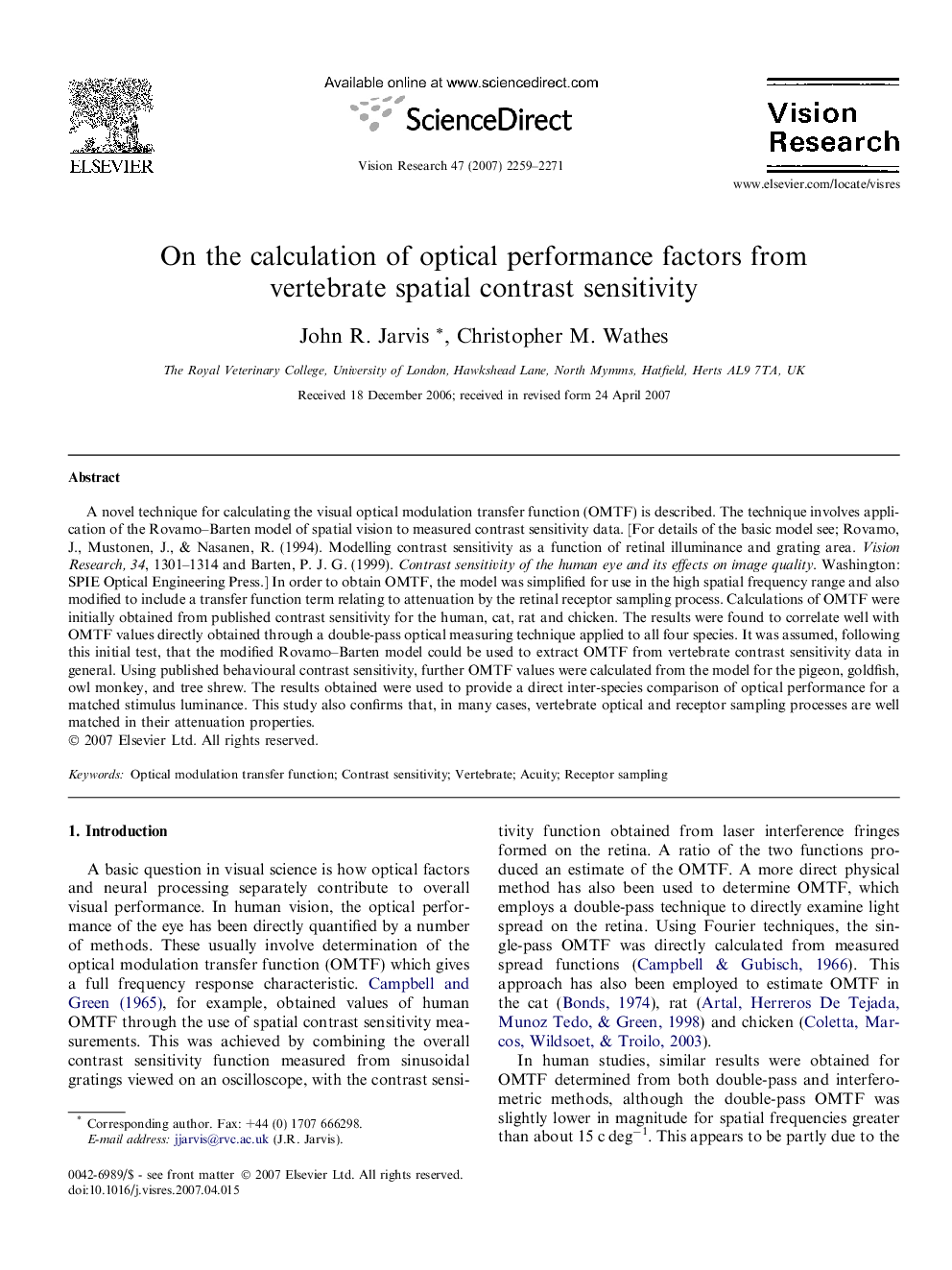| Article ID | Journal | Published Year | Pages | File Type |
|---|---|---|---|---|
| 4035451 | Vision Research | 2007 | 13 Pages |
A novel technique for calculating the visual optical modulation transfer function (OMTF) is described. The technique involves application of the Rovamo–Barten model of spatial vision to measured contrast sensitivity data. [For details of the basic model see; Rovamo, J., Mustonen, J., & Nasanen, R. (1994). Modelling contrast sensitivity as a function of retinal illuminance and grating area. Vision Research, 34, 1301–1314 and Barten, P. J. G. (1999). Contrast sensitivity of the human eye and its effects on image quality. Washington: SPIE Optical Engineering Press.] In order to obtain OMTF, the model was simplified for use in the high spatial frequency range and also modified to include a transfer function term relating to attenuation by the retinal receptor sampling process. Calculations of OMTF were initially obtained from published contrast sensitivity for the human, cat, rat and chicken. The results were found to correlate well with OMTF values directly obtained through a double-pass optical measuring technique applied to all four species. It was assumed, following this initial test, that the modified Rovamo–Barten model could be used to extract OMTF from vertebrate contrast sensitivity data in general. Using published behavioural contrast sensitivity, further OMTF values were calculated from the model for the pigeon, goldfish, owl monkey, and tree shrew. The results obtained were used to provide a direct inter-species comparison of optical performance for a matched stimulus luminance. This study also confirms that, in many cases, vertebrate optical and receptor sampling processes are well matched in their attenuation properties.
